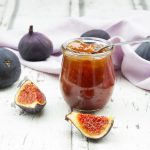Basil
Probably no herb screams of balmy evenings by the sea louder than basil. Those vibrant green leaves with their heady peppery scent, that we love to crush into a paste to make fresh, tasty pesto for our comfort pasta meals during winter, are now chopped up on top of our ħobż biż-żejt filling for one of the humblest, yet most moreish, meals.
Cultivated for more than 5000 years, with its reach spreading to all corners of the globe, today basil in one of the most widely-used culinary herbs in the world. However, its history is dotted with other uses that go beyond the kitchen.
In ancient Egypt, basil was likely used as an embalming and preserving herb when mummifying the dead. Perhaps because of its embalming applications, basil was also a symbol of mourning in Greece. Additionally, it has a strong history in ancient traditional medicines such as Ayurveda of ancient India.
Today basil is not only used to add flavour to meals but also in perfumery, incense and herbal holistic remedies. Recent scientific studies have established that compounds in the essential oil of basil plants possess potent antioxidant, antiviral and antimicrobial properties.
And did you know that basil juice should be added to the waters used for washing a new house to bring good luck and protection to all those living there? Think about that as you prepare a basil and champagne sorbet as a refreshing interval between courses or as a delicious dessert for the approaching summer days.





